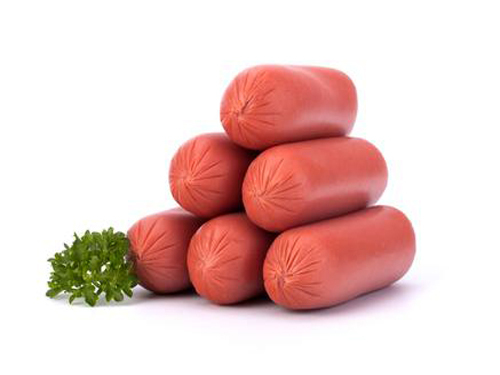The harmfulness of potassium sorbate

1. Potassium sorbate is a preservative.
2. Potassium sorbate has high safety, it can be absorbed by the body's metabolic system and rapidly decomposed into carbon dioxide and water with no residue in the body. Toxicity is only 1/4 of benzoic acid. It is safe to add food in the amount of food that does not exceed the limit. If it exceeds the standard, and if it is taken for a long time, it will inhibit bone growth to a certain extent and endanger the health of the kidney and liver.
When we are shopping for packaged (or canned) foods, we often see the words “sorbic acid†or “potassium sorbate†in the ingredients. People often mistakenly think that they may be the ingredients of the fruit “pearâ€. In fact, they are commonly used food additives! Whether they have any harm to the human body or not, explicit consumption is indeed very necessary. The following is information about sorbic acid and potassium sorbate for reference only:
Sorbic acid (chemical name: 2,4-hexadienoic acid formula: C6H8O2)
Potassium sorbate (chemical name: potassium 2,4-hexadienoate) Molecular formula: C6H7KO2 )
The properties and uses of sorbic acid and potassium sorbate are similar:
ã€Introduction】Sorbic acid is an efficient and safe preservative agent recommended by FAO and WHO. It is widely used in food, beverages, cosmetics, pesticides, cosmetics and other industries. As unsaturated acid, it can also be used in resins, spices and rubber. industry.
[Corrosion resistance]
Sorbic acid (potassium) can effectively inhibit the activity of mold, yeast and aerobic bacteria, and can also prevent the growth and reproduction of harmful microorganisms such as botulinum, staphylococcus, salmonella, etc., but to anaerobic spores and eosinophils. Lactobacillus and other beneficial microorganisms are almost ineffective, their role in inhibiting development is stronger than that of bactericidal action, so as to effectively extend the preservation time of foods and maintain the flavor of the original foods.
Its antiseptic effect is 5-10 times that of similar products sodium benzoate.
ã€safety】
As sorbic acid (potassium) is an unsaturated fatty acid (salt) which can be absorbed by the body's metabolic system and quickly decomposed into carbon dioxide and water, there is no residue in the body.
ADI 0-25mg/kg (based on sorbic acid, FAO/WHO 1994)
LD50 4920mg/kg (rat, oral)
GRAS (FDA, 182.3640 1994)
Its toxicity is only 1/2 of salt and 1/40 of that of sodium benzoate.
ã€stability】
Sorbic acid (potassium) is stable in the sealed state and is exposed to moist air and easily absorbs water, oxidizes and discolors. Potassium sorbate has good thermal stability and the decomposition temperature is as high as 270°C.
ã€Scope of use】
It has been widely used in food, beverages, pickles, **, pharmaceuticals, cosmetics, agricultural products, feed and other industries. From the development trend, the scope of application is still expanding.
Sorbic acid (potassium) is an acidic preservative and has good antiseptic effect in foods close to neutral (pH6.0-6.5). However, the effect of benzoic acid (sodium) preservative is obvious at PH>4. Decline, and there is a bad taste.
[usage]
When used, it can be directly added, sprayed, impregnated, sprayed with dry powder, processed on packaging materials, etc.
The Food Additives Expert Committee of the United Nations Food and Agriculture Organization and the World Health Organization (fao/who) (jecfa) regulates the amount of food additives (adi value). The adi value is defined as an estimate of the daily allowance for intake of a food additive without significant health hazards based on body weight, which is the primary and final basis for evaluating the safety of food additives at home and abroad. The adi values ​​of saccharin sodium, sodium cyclamate, sodium benzoate, and potassium sorbate are 5mg/kg, 11mg/kg, 5mg/kg, and 25mg/kg (in mg/kg per kg body weight per day. Milligrams). This value has important reference value for the production and processing of safe and reliable children's food.
1. Candied, pickled foods use a lot of sweeteners, commonly used preservatives, and most of them do not clearly label the additives used in the label, the problem is more, quality is unstable. Consumers should moderately consume candied fruit, especially honey plum and dried tangerine peel, with a high content of sweeteners. Especially children, pregnant women and other people should not eat candied foods.
2. In China, countries with fruit juice (flavor) beverages have a higher limit for preservatives than carbonated beverages that contain gas. This may lead to higher levels of preservatives in juice (flavor) beverages than carbonated beverages. Children drink fruit juice (flavored) ) Drink in moderation.
Wood series are steel or aluminum coils coated with wooden pattern designs. the paint could be PE, HDP, FEVE, PVDF. it has the texture of wood, has the warmth of wood and strength of steel, it has stunning looks and has the property of light weight, free of maintenance, anti fire, long-life service time. it brings more choices to the designers. It's widely used to make roofing, cladding, fences, doors, interior decoration.
Wood Series,High Quality Wood Series,Wood Series Details, CN
Shandong Wofeng New Material Co., Ltd. , https://www.wofengcoil.com